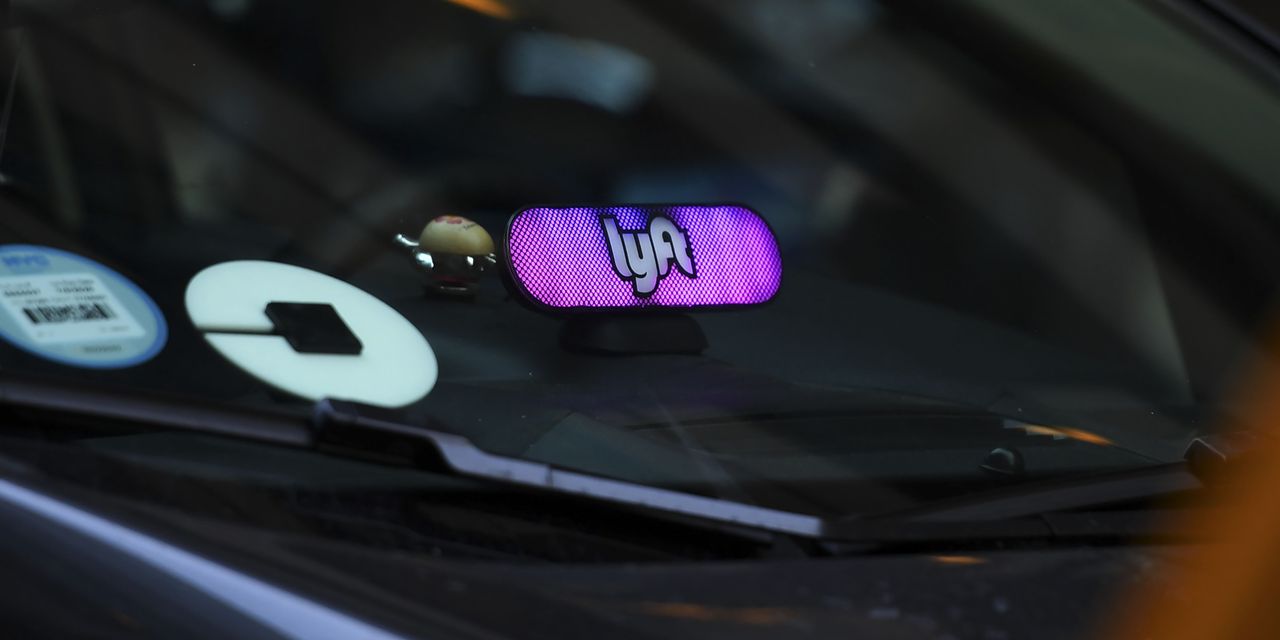
Want a bargain ride? Hail a taxi. Ride-share pricing might never be quite as accessible as it once was.
For U.S. consumers, Uber and Lyft rides have been infamously expensive for most of the pandemic. Ride-hailing companies have attributed much of the added cost to a driver shortage, which they recently made a big and expensive push to solve. But even as driver supply has improved, prices aren’t yet back to pre-pandemic levels. They might not get there.
SHARE YOUR THOUGHTS
Are you willing to pay more for Uber and Lyft long-term? Why, or why not? Join the conversation below.
A research note out last week from Gordon Haskett Research Advisors showed ride-share fares up nearly 50% from 2019 levels on a per-mile basis in Chicago in August, citing publicly available data from the city. The data show pricing has increased steadily since November as ride-share volumes improved. It has recently been cheaper on a per-mile basis to hail a taxi in Chicago than call an Uber or Lyft, a phenomenon that analyst Robert Mollins says is “the opposite of historical norms.” Back in January 2020, it cost nearly 50% more to travel in a taxi than to use solo ride-share service around the Windy City.
Chicago is but one small piece of the pie, comprising just 5% of all ride-share spending in the U.S. as of August, according to Edison Trends data. New York, however, commanded 23%, and trends there suggest Chicago isn’t a total anomaly. Data from the New York City Taxi and Limousine Commission show that taxis have been retaking share.
Drivers are slowly coming back. New York data shows that the number of unique ride-share drivers was down 29% from 2019 levels in August, but that was slightly better than the prior month and a big improvement from down 45% in January and February, according to Gordon Haskett.
Yet costs are still rising. YipitData shows the average Uber and Lyft ride cost nearly 39% more than the average taxi ride in New York City in August and that prices per ride have increased month to date for Uber and Lyft as of mid-September from a month earlier. As of two weeks ago, the price per mile driven for Uber and Lyft across the U.S. as a whole was up 26% versus 2019 and 17% versus January, according to YipitData.
Elevated prices could persist in part to keep drivers on the platforms. Uber and Lyft won’t want to motivate drivers out of their own pockets forever if sustained profits are the goal. In September, Uber Chief Executive Dara Khosrowshahi said at an investor conference that consumer price increases aren’t about take rates—or adjusted net revenue divided by bookings—but about drivers earning a fair keep. As recently seen in the U.K., the situation in the U.S. could become compounded by future gig-economy regulation, mandating higher wages and potentially even employee status for drivers.
Uber and Lyft have been clear that they expect pricing to ease as driver supply meets rider demand, but it isn’t yet certain exactly to what degree. Uber’s Mr. Khosrowshahi pointed out at the same investor conference that while pricing power for his company’s Rides business is something that had always been hypothesized, right now, “it certainly shows.” To that end, he also said Uber is actively developing alternative services for “folks who want cheaper ways of getting around.”
It could be that pricing power is merely a function of the pandemic, given some consumers are still wary of public-transportation alternatives. But there is evidence that higher pricing can persist, even in a post-Covid-19 world. YipitData indicates that ride-share volumes increased along with pricing per mile in September, in New York and nationwide.
Gordon Haskett’s Mr. Mollins suggests the recent uptick in taxi use in some cities might have more to do with excessive wait times, rather than ride-share pricing. He says most people find ride-share service to be a better experience than riding in a taxi, suggesting taxis could once again fall out of favor as ride-share supply returns. New York City data show that, although taxis have been taking back share this year, ride-share companies still own most of the for-hire-vehicle market.
Uber and Lyft have reason to keep prices high so long as demand continues to improve. Ride-share companies can benefit, even if they don’t directly pocket the extra cash: The more price increases are passed on to drivers, the less Uber and Lyft have to pony up themselves to motivate those drivers to work.
At the end of the day, why charge less when you can get more?
Heard Stock-Picking Leaderboard
Write to Laura Forman at [email protected]
Copyright ©2021 Dow Jones & Company, Inc. All Rights Reserved. 87990cbe856818d5eddac44c7b1cdeb8








